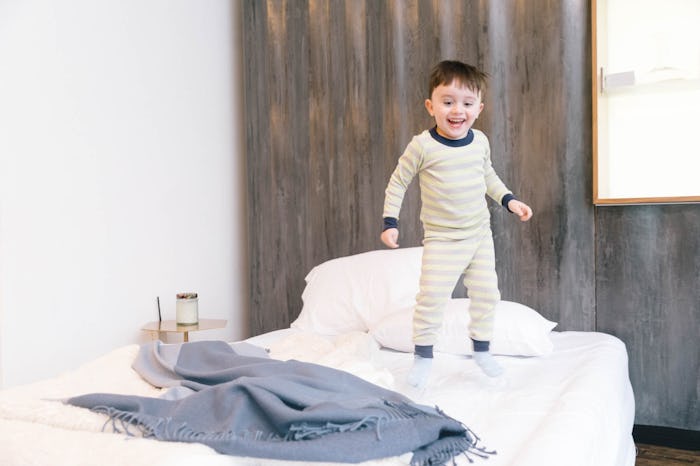Life
Here's When It's Safe To Give Your Toddler A Pillow, According To Experts
My best friend and I have 2-year-olds who are only weeks apart, and while her little boy has been sleeping in a toddler bed for months, I have no plans to move mine out of the confines of his crib anytime soon. When my friend's son transitioned to a bed he also got a pillow, which I had never even thought of giving my toddler since he's still in a crib. But I began to wonder, how do you know when your toddler is ready for a pillow? Do they need the neck support regardless of where they're sleeping?
Certified Sleep Science coach and founder of SleepZoo.com, Chris Brantner, says that one simple rule of thumb is if the child is old enough for a "big kid" bed, he or she is also ready for a pillow. But what about toddlers like my son who stay in the crib for an extended length of time? Brantner says to watch for the child's cues. "Focus on their behavior. Often your child will begin laying their heads on things like stuffed animals or blankets when they're ready for a pillow," he advises.
Bill Fish, another Certified Sleep Science coach, adds that the child should be able to stand up, move around the crib, roll around, and have enough control of their motor functions to ensure that there would be absolutely no chance of suffocation. "When we are discussing toddlers, the focus should be on safety, well over the perceived ‘comfort’ of the child," the founder of Tuck.com tells Romper.
If your toddler is truly ready for a pillow, it can definitely help them sleep better. According to Brantner, the right pillow will provide proper support for the head and neck, and help keep their spine in alignment as they sleep. Just as in the case of adults, the right alignment leads to higher quality and quantity of sleep for young children.
But don't go tossing your old king sized pillow into the crib. Brantner says it's important to offer your toddler a pillow that is appropriate for her size. The average toddler pillow is 12 x 18 inches; essentially a miniature version of an adult pillow. After you've introduced a pillow with limited loft, Fish recommends making note of whether their neck is being supported. As they grow, he says, "You can gradually move to a pillow with a bit more loft to help the spine to be aligned properly."
Experts advise against giving your toddler a pillow that is overly fluffy and could pose a suffocation risk, no matter how coordinated you think he is. And don't put more than one pillow in the bed, as that's yet another safety hazard. Just a single, small, fairly flat pillow should do the trick, and Brantner says they're easy to find on Amazon.
As any parent who has been around the block will tell you, your toddler's pillow will almost inevitably get dirty on a regular basis. Whether it's dropped in food or drooled or urinated on, this little pillow is going to need to be washable and durable in order to survive your child's room. Don't forget to check the description to make sure it's safe to machine-wash.
My toddler's nightly routine is currently easy and uneventful, so I don't have plans to stir the pot by moving him into a big boy bed anytime soon. But if his neck and spine could benefit from the support of a small pillow, I'm just a few clicks away from ordering the right one. Now if only the rest of bedtime could be so easy.
